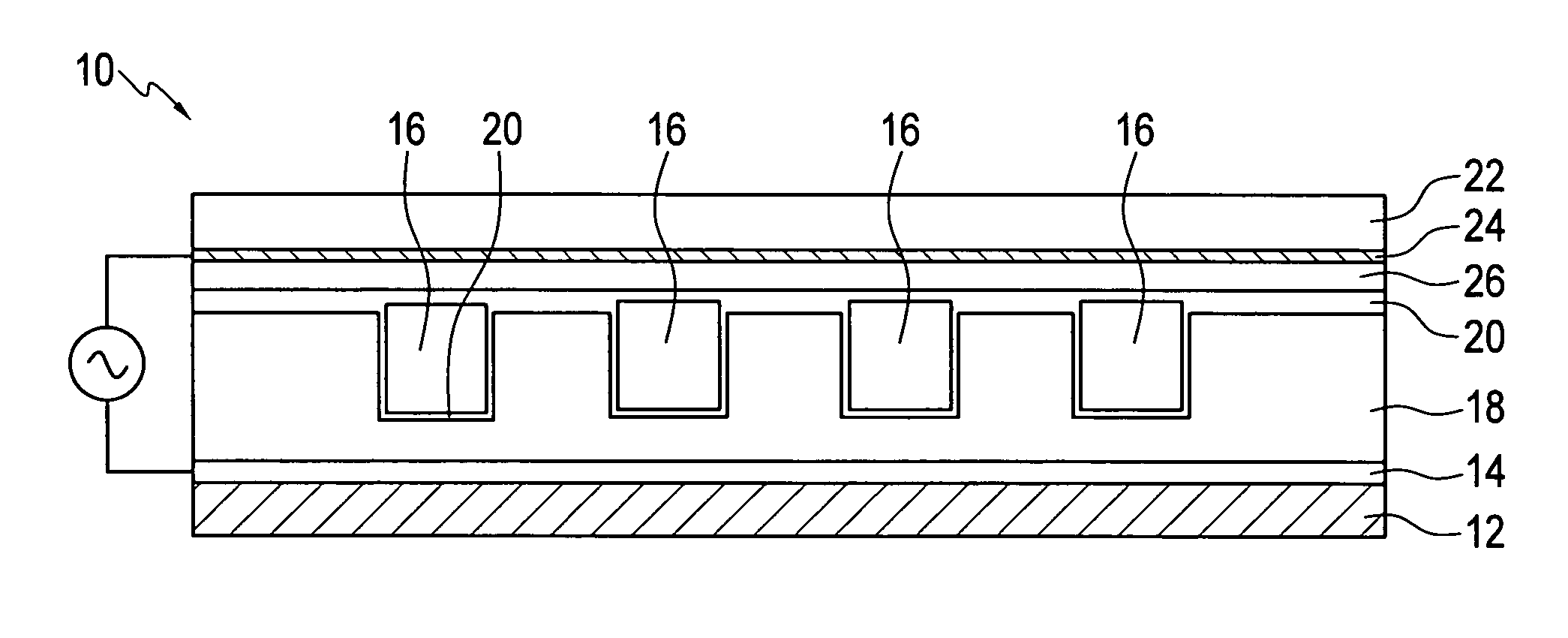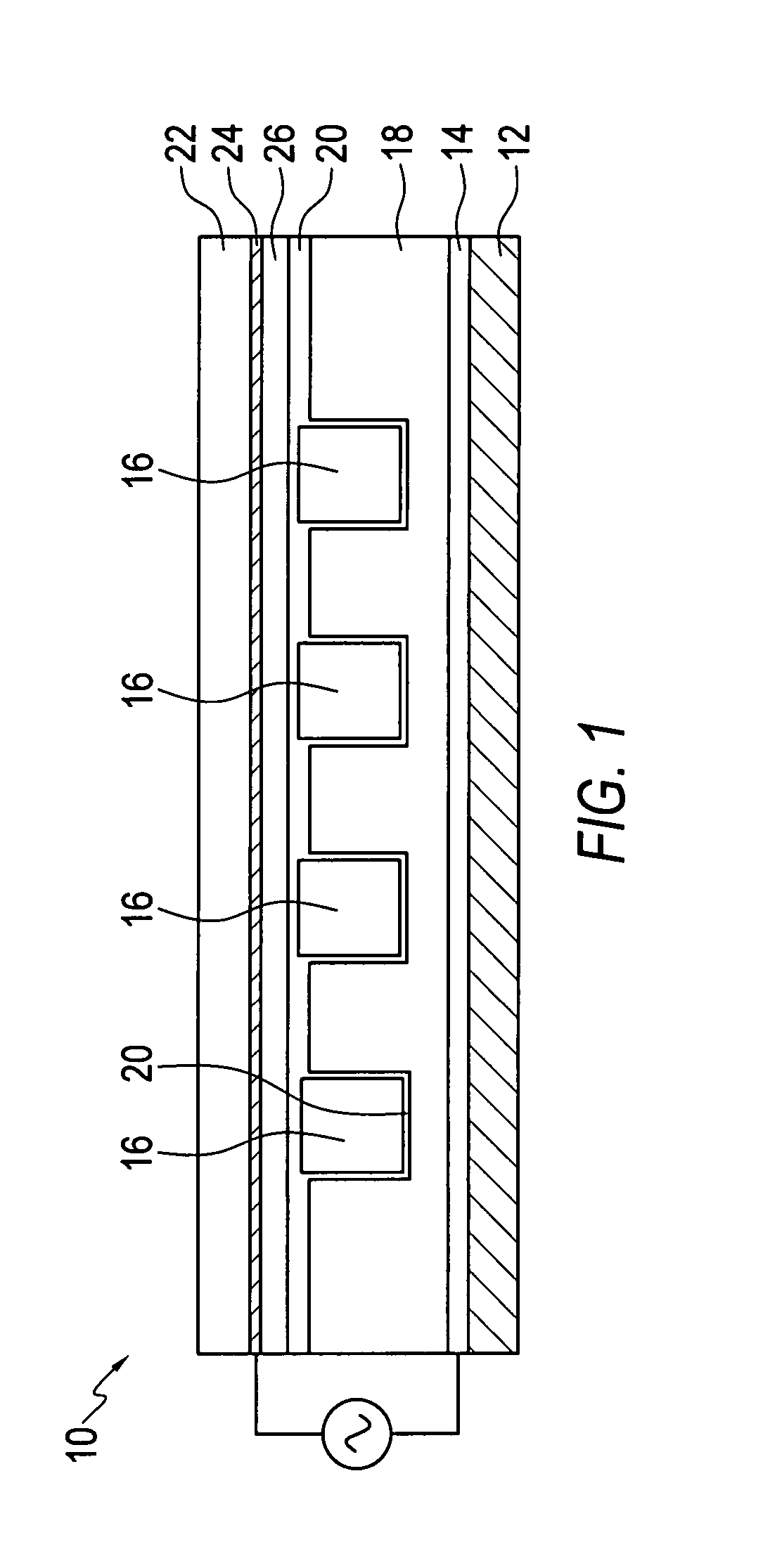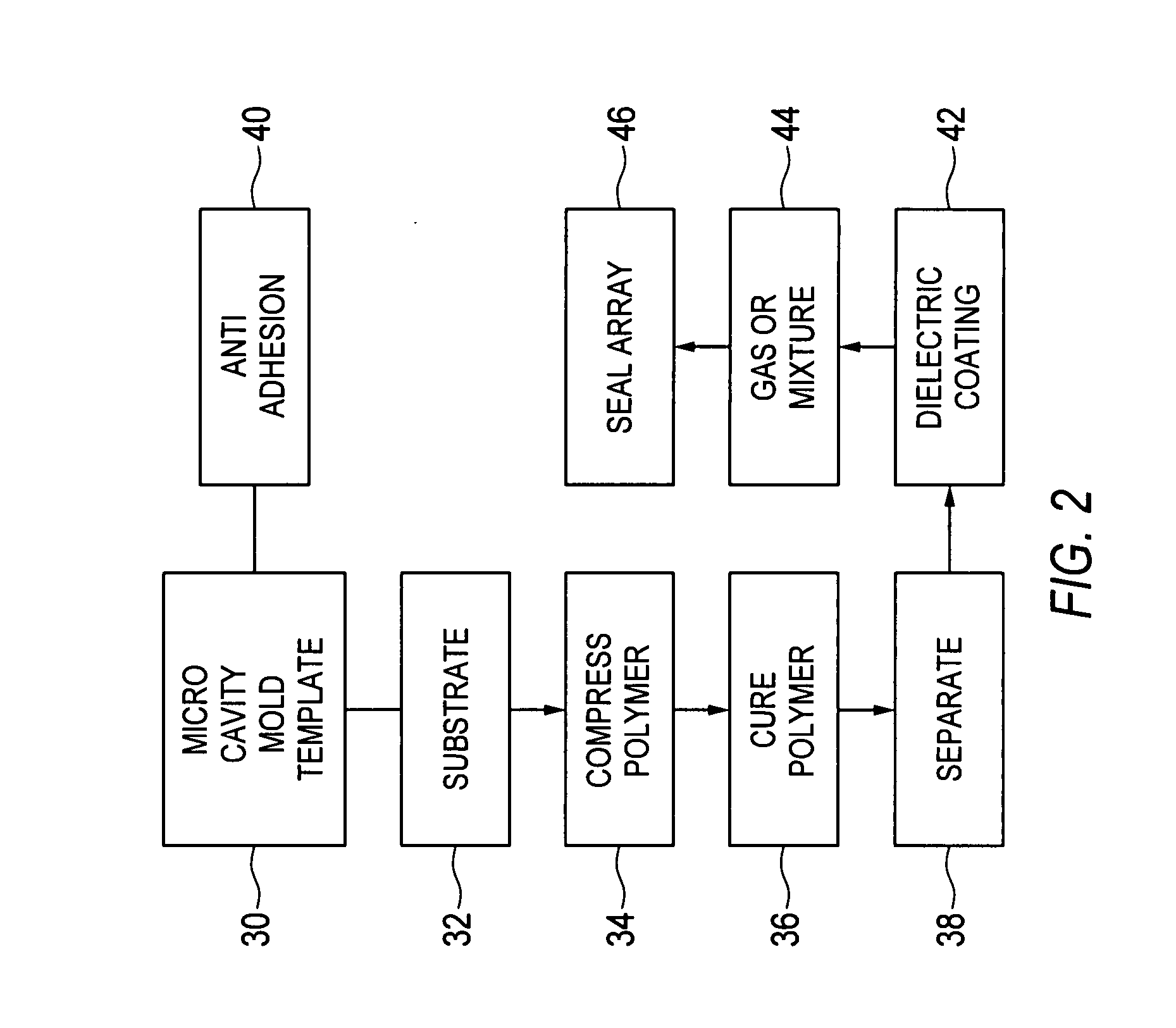Polymer microcavity and microchannel devices and fabrication method
a technology of microchannels and polymers, applied in the manufacture of electrode systems, cold cathode manufacturing, electric discharge tubes/lamps, etc., can solve the problems of short lifetime of microplasma devices, and difficult to manufacture small sizes
- Summary
- Abstract
- Description
- Claims
- Application Information
AI Technical Summary
Benefits of technology
Problems solved by technology
Method used
Image
Examples
Embodiment Construction
[0029] Microcavity plasma device arrays of different embodiments of the invention provide polymer microcavities that are readily mass fabricated, can be transparent, and can be rigid or flexible. A preferred embodiment of the invention is a polymer microcavity plasma array formed on a substrate. In a preferred embodiment, the polymer is a transparent polymer having transparency in a particular range of interest, e.g., such as infrared (IR), visible, ultraviolet (UV) or a range extending to portions of the IR, visible and UV ranges. In preferred embodiments, the transparent polymer is transparent in at least a portion of the visible range. The substrate and electrodes can also be transparent in preferred embodiments. In preferred embodiments, transparent polymer microcavities are formed in a flexible polymer material. In other preferred embodiments, the transparent polymer microcavities are formed in a rigid polymer material. Arrays of the invention can be very large format, as array...
PUM
| Property | Measurement | Unit |
|---|---|---|
| diameter | aaaaa | aaaaa |
| size | aaaaa | aaaaa |
| area | aaaaa | aaaaa |
Abstract
Description
Claims
Application Information
 Login to View More
Login to View More - R&D
- Intellectual Property
- Life Sciences
- Materials
- Tech Scout
- Unparalleled Data Quality
- Higher Quality Content
- 60% Fewer Hallucinations
Browse by: Latest US Patents, China's latest patents, Technical Efficacy Thesaurus, Application Domain, Technology Topic, Popular Technical Reports.
© 2025 PatSnap. All rights reserved.Legal|Privacy policy|Modern Slavery Act Transparency Statement|Sitemap|About US| Contact US: help@patsnap.com



